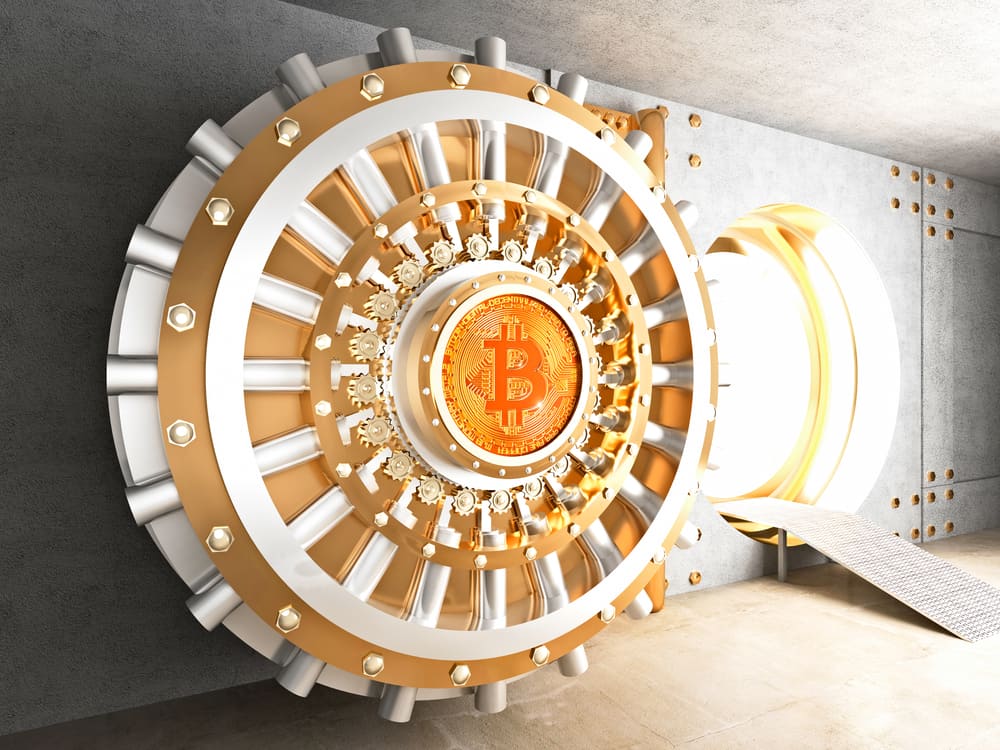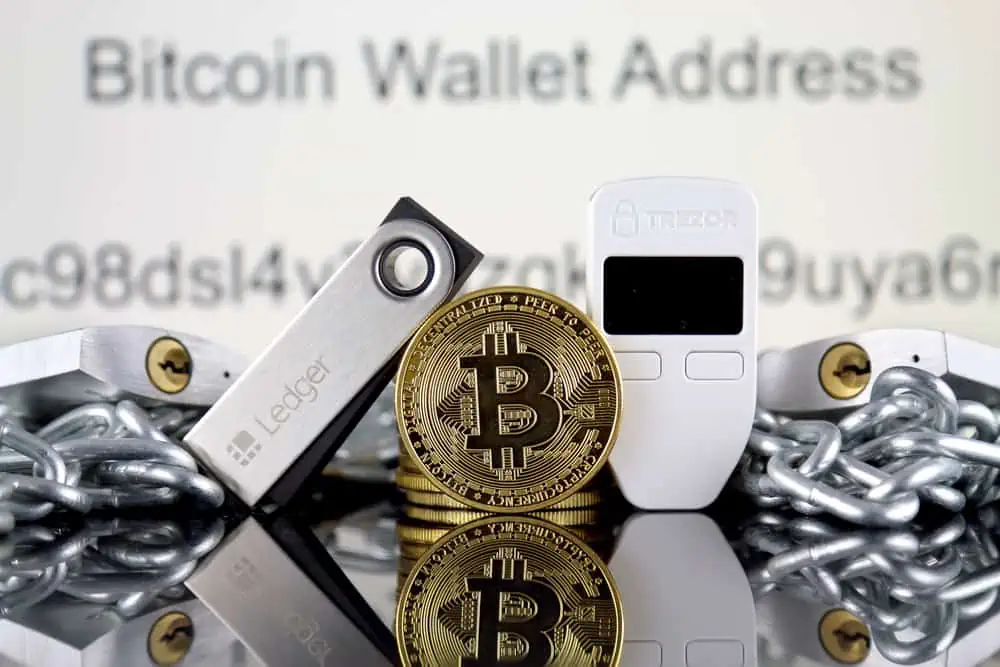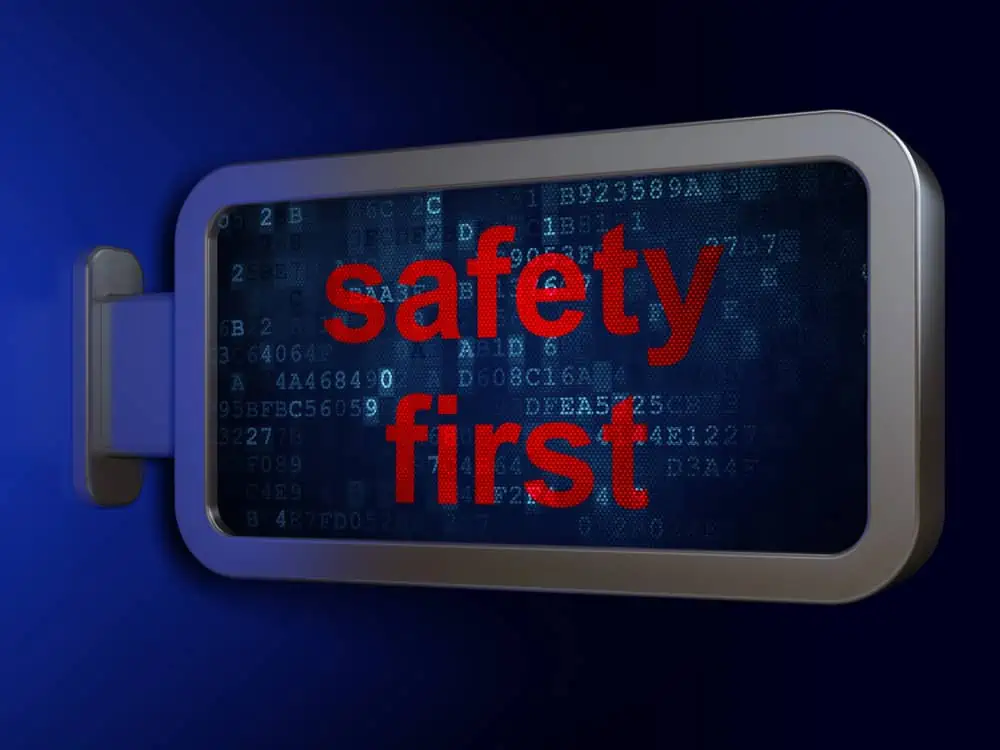Building your crypto fortune? Don’t let hackers snatch it! As your digital wealth grows, sinister threats lurk in the shadows aiming to drain your accounts through deceitful schemes or brute force attacks. One keystroke logger or emptied exchange account could erase years of savvy investing.
Disclaimer: This information is general in nature and for informational purposes only. It is not personal financial advice and has not taken into account your personal financial position or objectives. Make sure to refer to a licensed financial or tax advisor.
We introduce the steps you can (and should) take to secure your crypto assets in this complete guide to cryptocurrency security.
The terms and ideas can be overwhelming so we have tried to make this complete guide on cryptocurrency security comprehensive but as concise as possible.
With the rising popularity of cryptocurrencies like Bitcoin and Ethereum, cryptocurrency security has become more important than ever. As more people invest in digital assets, cryptocurrency safety and digital asset protection should be top priorities. This comprehensive guide covers everything you need to know to properly secure your crypto coins.
Table of Contents
Pros and Cons of Crypto Wallet Options
Hardware Wallets
Devices like Trezor and Ledger offer excellent security standards for storing larger amounts of crypto intended for long term holding or cold storage. Hardware wallets keep sensitive private keys offline and use encryption to protect against remote security threats. Downsides are the costs involved and lack of ability to quickly transact or interact with decentralized applications.
Paper Wallets
Printed QR codes and passphrases enable taking cryptocurrency offline for secure cold storage. Without connectivity there is no risk of remote hacking. However paper wallets are vulnerable to physical theft or damage, limiting usefulness for substantial personal or enterprise cryptocurrency investments.
Brain Wallets
Memorizing an extremely complex passphrase is a free method to have a private key solely in one’s mind. But most people struggle to create and recall strong enough brain wallet credentials to resist brute force attacks – making loss of access to your crypto likely.
Hot Wallets
Internet-connected apps and exchange accounts allow convenient access for active crypto trading, checking balances, collecting staking rewards and transacting. The tradeoff for such ready access your cryptocurrency is increased exposure to phishing, malware and other security breaches seeking to steal keys and drain wallets.
Custodial Exchanges
Platforms like Coinbase hold customer assets and simplify the process of investing in crypto for beginners through intuitive interfaces and educational resources. However centralized control over user accounts and keys means trusting a 3rd party for security of your digital assets.
Non-Custodial Exchanges
Decentralized exchanges allow direct peer-to-peer cryptocurrency transactions through smart contracts. Without a middleman, users maintain control of private keys and bear full responsibility for the security of their exchange activity and wallets. Understanding risks involved is crucial.
Not Your Keys, Not Your Wallet
A common refrain in cryptocurrency circles is “Not your keys, not your wallet.” This succinct phrase encapsulates an important security reality for crypto investors.
When you leave cryptocurrency assets on exchanges or online wallets operated by third parties, they control the private keys that allow spending or transferring your holdings. Possession of private keys is equivalent to control of the funds. Even if a platform like Coinbase, Kraken or Binance has robust account protections, the fact remains that you must trust them to secure your assets.
By withdrawing cryptocurrency to a wallet whose keys you exclusively control, you operate independently without third party security risks. Self-managed wallets empower investors to be the only ones enabling transactions on the blockchain. This comes with its own user security responsibilities of course. But for many crypto holders, maintaining direct control of keys provides greater confidence despite the extra steps.
So when hardcore crypto enthusiasts insist “not your keys, not your wallet,” they advocate holding coins in places where you alone determine what happens to them via private key management. The phrase encapsulates the essence of cryptocurrency’s ecosystem being based on independence from traditional institutions. Understanding its meaning can guide security decisions.
Securing Your Private Keys and Seed Phrases
The foundation of blockchain security for cryptocurrency starts with properly securing your private keys and seed phrases. Your private keys and seed phrases give you control of your wallet and coins. If someone gains access to them, they have complete control.
- Use a hardware wallet like Ledger or Trezor for secure cold storage of your private keys offline. These leverage encryption protocols for maximum security.
- Paper wallets are also good for cold storage as long as they are properly secured from physical damage, theft, etc.
- Never store private keys or seed phrases digitally such as taking a photo with your phone or storing on a computer.
Strong Passwords and Multi-Factor Authentication
In addition to securing private keys, maintaining strong passwords on your online cryptocurrency accounts is crucial. Exchanges and hot wallets should have multi-factor authentication (MFA) enabled for account access.
Popular MFA methods include:
- SMS authentication
- Google Authenticator app
- Authy app
The use of randomly generated passwords stored in a password manager combined with MFA creates strong account security barriers.
Additional Security Precautions
Here are more proactive cryptocurrency exchange security tips to safeguard your assets:
- Only connect to exchanges via HTTPS encrypted sites.
- If available, enable whitelisting IP addresses to only allow account access from designated locations.
- For increased privacy use the TOR browser or a VPN when accessing exchange accounts.
- Carefully vet any crypto investment opportunities to avoid pump and dump schemes.
Blockchain Threats and Attacks
Despite the inherent security benefits of blockchain technology, cryptocurrency users still face an array of threats from hackers including:
- Phishing attacks via fake wallet apps and websites
- SIM swapping to intercept 2FA codes
- Malware and keyloggers breaching computer systems
- Dangerous hard fork implementation allowing 51% attacks
Being vigilant and protecting access points with authenticator apps, biometrics, and MFA denies attackers easy access and foils their plans.
Crypto Security for Organizations
For organizations that handle significant cryptocurrency assets, security measures extend well beyond basic private key management:
- Conduct stringent background checks before granting employees access.
- Implement segmented access controls based on roles. Not everyone needs full privileges.
- Enlist trusted external firms to perform regular penetration testing and security audits.
- Store majority of funds in insured custody solutions and hardware security modules.
- Follow strict cryptocurrency governance and track activity via security information and event management (SIEM) tools.
- Backup strategies, activity monitoring, firewalls and zero trust model adoption provide overlapping security.
How Can I Protect My Cryptocurrency from Phishing Attacks?
When it comes to protecting your cryptocurrency from phishing attacks, it’s crucial to be proactive and employ effective phishing prevention methods. This includes using two-factor authentication, being cautious of unsolicited emails or messages, and double-checking website URLs before entering any sensitive information.
Personal Crypto Security Best Practices
Even individual crypto investors must go beyond just having a hardware wallet to be considered secure. Here are proactive tips to incorporate:
- Treat crypto wallets like bank accounts – be careful when and where accessing them. Never use public WiFi.
- Use a separate computer for crypto – no personal usage that could drop malware.
- Beware crypto scams – if an offer is too good to be true (guaranteed returns) it likely is.
- Enable available account/wallet security settings – whitelist addresses, IP tracking, remote logout etc.
- Practice good “crypto hygiene” – don’t share details publicly, shred sensitive physical documents when done using them.
Staying Protected While Connected to the Internet
As cryptocurrency becomes more mainstream, investors are increasingly using internet-connected devices to access their accounts and make cryptocurrency transactions. This convenience does mean reduced security compared to offline cold storage. However, there are still steps you can take to protect your crypto while participating in the exciting crypto market:
- Only make crypto transactions on secure networks that you own and control access to. Never use public WiFi without a VPN.
- Use a dedicated computer or mobile device solely for crypto account access – one with a fresh operating system install and necessary protections that is never used for risky browsing and downloads.
- Adopt comprehensive endpoint security on devices used for crypto including anti-virus, system encryption, firewall, activity monitoring and anomaly detection.
- Be selective when downloading new crypto apps for phones and computers. Vet them thoroughly and start with small test transactions to confirm they are legit wallets not malware.
The crypto world moves fast but don’t let the pace cause you to overlook fundamental protections to keep your cryptocurrency and protect your digital assets from unauthorized access and theft. The right blend of security solutions tailored to your risk tolerance enables staying connected while keeping your holdings secured.
Conclusion
I hope this comprehensive guide to crypto security provided helpful measures to employ no matter your level of blockchain activity. Cryptocurrency safety boils down to proactively managing private keys, limiting access points, leveraging available technologies, and staying vigilant against attack vectors. Implementing even a few protocols goes a long way to providing that essential digital asset protection we all seek in the cryptocurrency world. Let me know if you have any other crypto security questions!




